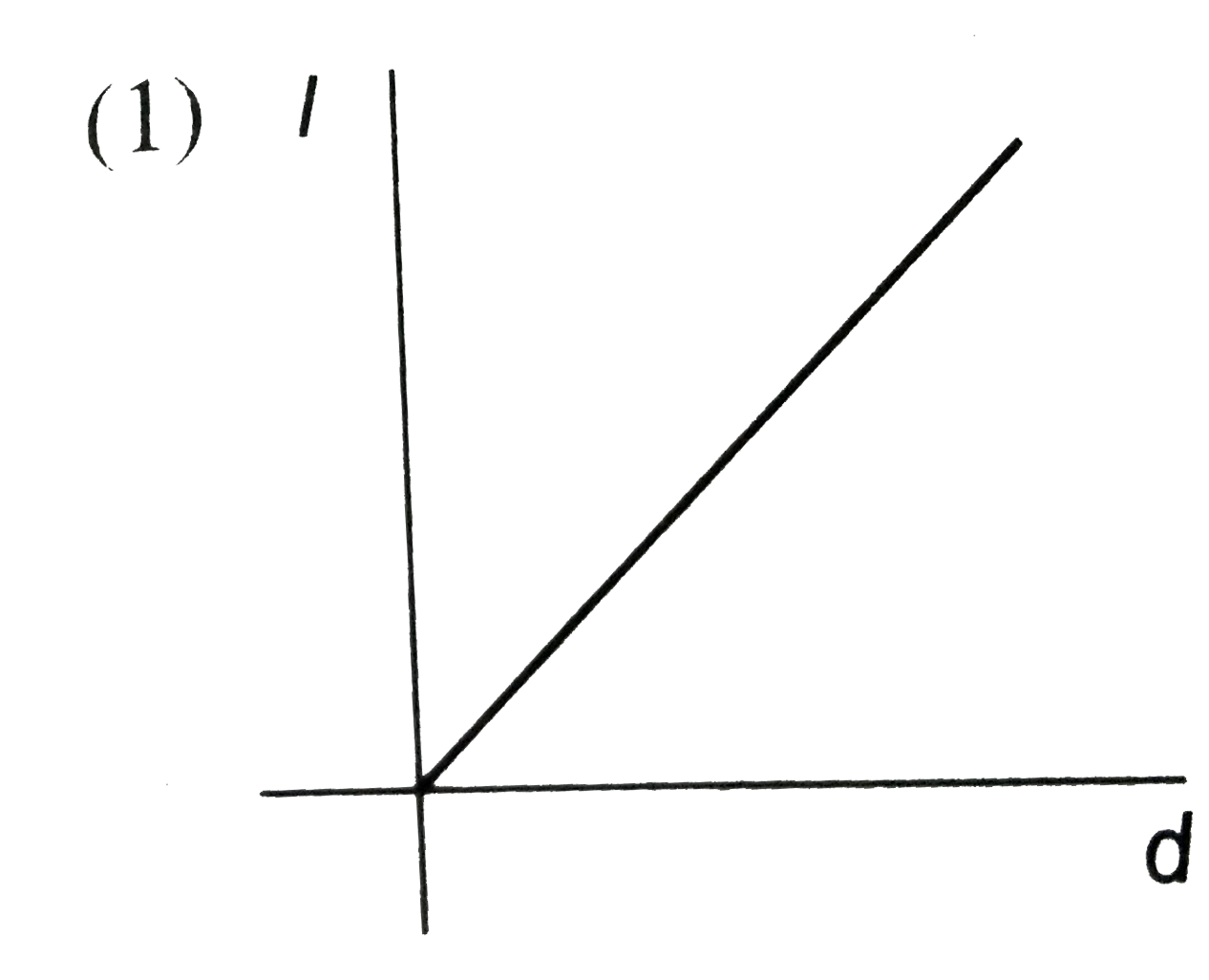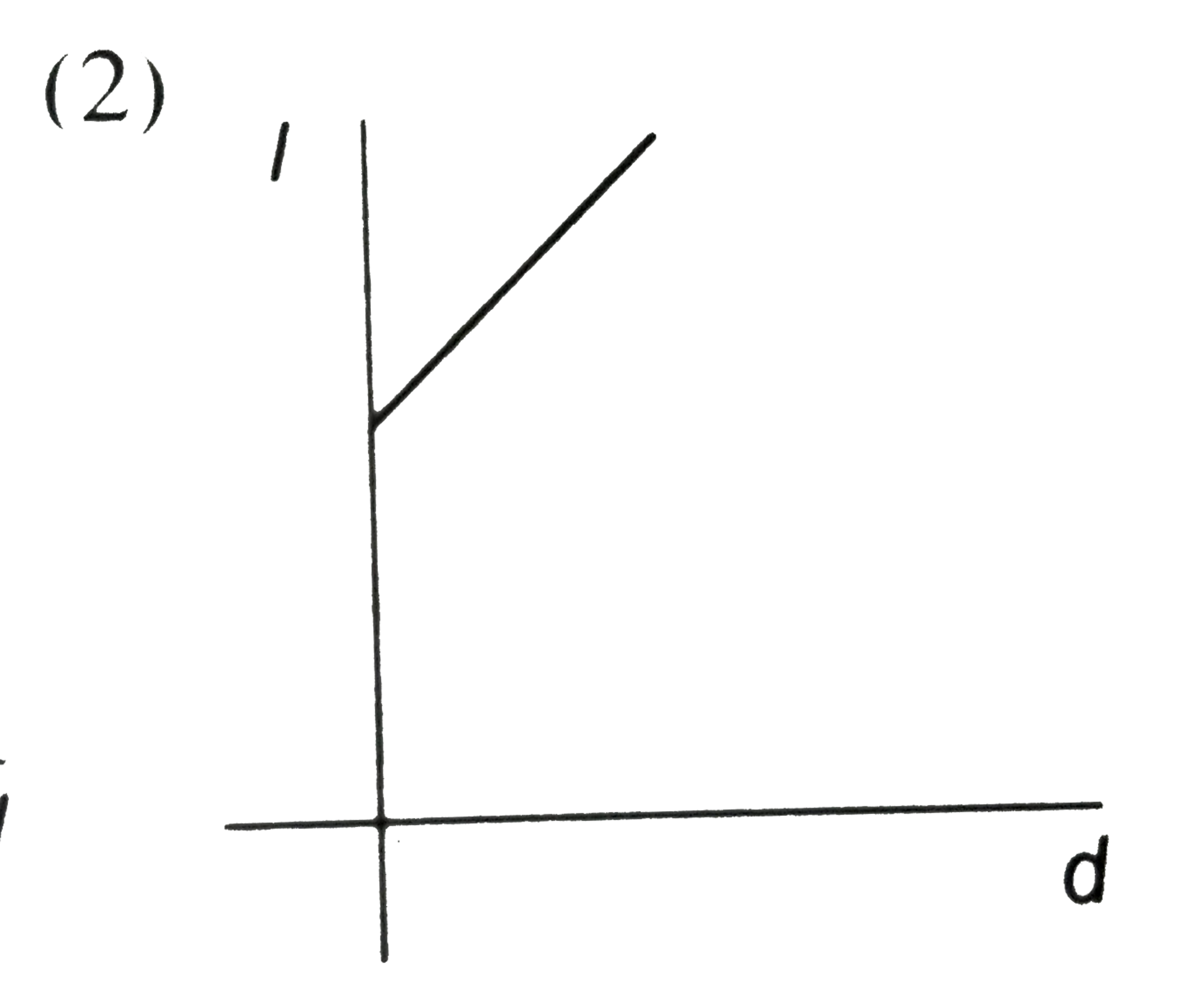If I0 is the moment of inertia body about an axis passing through its center of mass. The moment about a parallel axis and at distance d is I=I0+Md2. The variation of I with d is




To solve the problem, we need to analyze the relationship between the moment of inertia I and the distance d based on the given equation from the parallel axis theorem:
I=I0+Md2
1. Understanding the Equation:
- The equation I=I0+Md2 indicates that the moment of inertia I about a parallel axis is equal to the moment of inertia I0 about the center of mass plus a term that depends on the mass M and the square of the distance d.
2. Identifying Variables:
- Here, I0 is a constant (the moment of inertia about the center of mass).
- M is the mass of the body, which is also a constant.
- The term d2 indicates that the moment of inertia varies with the square of the distance d.
3. Analyzing the Variation:
- Since d2 is a quadratic function, the equation can be rewritten as:
I=I0+M(d2)
- This indicates that I is a function of d2, which is a parabolic relationship.
4. Graphical Representation:
- If we plot I on the y-axis and d on the x-axis, the graph will be a parabola opening upwards.
- At d=0, I=I0, meaning the graph will start at the point (0,I0) and will not pass through the origin.
5. Conclusion:
- The variation of I with d is parabolic, and the graph does not pass through the origin. Therefore, the correct option for the variation of I with d is the one that represents a parabola starting from I0.
Final Answer:
The variation of I with d is parabolic, starting from I0 when d=0.
---
- The equation I=I0+Md2 indicates that the moment of inertia I about a parallel axis is equal to the moment of inertia I0 about the center of mass plus a term that depends on the mass M and the square of the distance d.
- Here, I0 is a constant (the moment of inertia about the center of mass).
- M is the mass of the body, which is also a constant.
- The term d2 indicates that the moment of inertia varies with the square of the distance d.
- Since d2 is a quadratic function, the equation can be rewritten as:
I=I0+M(d2)
- This indicates that I is a function of d2, which is a parabolic relationship.
- If we plot I on the y-axis and d on the x-axis, the graph will be a parabola opening upwards.
- At d=0, I=I0, meaning the graph will start at the point (0,I0) and will not pass through the origin.
- The variation of I with d is parabolic, and the graph does not pass through the origin. Therefore, the correct option for the variation of I with d is the one that represents a parabola starting from I0.
The variation of I with d is parabolic, starting from I0 when d=0.
Topper's Solved these Questions
Similar Questions
Knowledge Check
Assertion: Moment of inertia of a rigid body about any axis passing through its centre of mass is minimum
Reason: From theorem of parallel axis
I=Icm+Mr2AIf both Assertion and Reason are true and the Reason is correct explanation of the Assertion.BIf both Assertion and Reason are true but Reason is not the correct explanation of Assertion.CIf assertion is true, but the reaction is false.DIf assertion is false but the reason is true.If the moment of inertia of a ring about transverse axis passing through its centre is 6 kg m2, then the M.I. about a tangent in its plane will be
A3kgm2B9kgm2C6kgm2D12kgm2The moment of inertia of a solid sphere about an axis passing through the centre radius is 12MR2 , then its radius of gyration about a parallel axis t a distance 2R from first axis is
A5RB√225RC52RD√125R
The moment of inertia of a ring of mass 5 gram and radius 1 cm about and axis passing through its edge and parallel to its natural axis is
View SolutionThe moment of inertia of ring about an axis passing through its diameter is I. Then moment of inertia of that ring about an axis passing through its centre and perpendicular to its plane is
View SolutionThe moment of inertia of a solid sphere about an axis passing through its centre of gravity is 25MR2 . What is its radius of gyration about a parallel axis at a distance 2R from the first axis ?
View SolutionMoment of inertia of a rigid body about an axis passing through its centre of mass is I0 and moment of inertia of the same body about another axis parallel to the first axis is I. Then
View SolutionMoment of inertia of a rigid body about an axis through its centre of gravity is 10kgm2 . If mass of the body about an axis parallel to the first axis and separated by a distance of 1m is
View Solution
